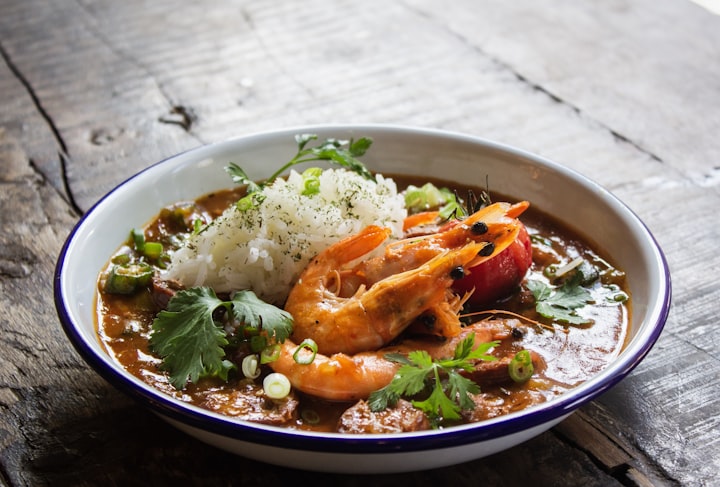Exploring the Exotic Flavors of Thai Cuisine
Thai cuisine is a celebration of vibrant flavors that dance harmoniously on your palate, leaving an unforgettable taste of culinary enchantment.

Thai cuisine is a vibrant and tantalizing tapestry of flavors, combining the boldness of spices, the freshness of herbs, the tanginess of citrus, and the creaminess of coconut. It is a culinary adventure that captivates the senses and leaves a lasting impression. In this article, we will take you on a journey through the diverse and exotic flavors of Thai cuisine. From the fiery heat of Tom Yum soup to the delicate balance of Pad Thai, we will explore the unique ingredients, cooking techniques, and regional specialties that make Thai cuisine a true delight for adventurous food lovers. So, fasten your seat belts and get ready to embark on a flavorful adventure through the land of smiles.
The Essence of Thai Cuisine:
Thai cuisine is known for its harmonious blend of sweet, sour, salty, and spicy flavors. It is a culinary tradition that celebrates the balance between these contrasting elements, creating dishes that are complex yet well-rounded in taste. Thai cuisine also emphasizes the use of fresh ingredients, aromatic herbs, and a variety of spices that give each dish its distinct character.
Key Ingredients in Thai Cooking:
The magic of Thai cuisine lies in its diverse range of ingredients. From fragrant lemongrass and pungent galangal to fiery Thai chilies and zesty lime leaves, each ingredient contributes to the unique flavor profile of Thai dishes. Additionally, the use of fish sauce, shrimp paste, coconut milk, and palm sugar adds depth and richness to the cuisine.
Signature Thai Dishes:
(a) Tom Yum Goong: This hot and sour soup is a quintessential Thai dish, bursting with flavors of lemongrass, lime, chili, and fragrant herbs. The combination of succulent shrimp, mushrooms, and aromatic spices makes it a favorite among soup lovers.
(b) Pad Thai: One of the most famous Thai dishes, Pad Thai is a stir-fried noodle dish that showcases the perfect balance of sweet, sour, and savory flavors. Rice noodles are tossed with shrimp, tofu, bean sprouts, eggs, and a tangy tamarind-based sauce, creating a symphony of tastes and textures.
(c) Green Curry: A staple in Thai cuisine, green curry is a fragrant and spicy dish made with a paste of green chilies, Thai basil, lemongrass, and other aromatic ingredients. It is traditionally cooked with chicken or beef, coconut milk, and an assortment of vegetables, resulting in a creamy and flavorful curry.
(d) Mango Sticky Rice: This delightful dessert captures the essence of Thai cuisine. Sweet, ripe mangoes are served with sticky rice infused with coconut milk and topped with a drizzle of salty-sweet coconut sauce. The combination of flavors and textures makes it a heavenly treat.
Regional Varieties:
Thai cuisine is not limited to a single style or flavor profile. Each region in Thailand has its own unique culinary traditions and specialties. For example:
(a) Northern Thai Cuisine: Known for its rich and bold flavors, Northern Thai cuisine features dishes like Khao Soi, a fragrant curry noodle soup, and Gaeng Hang Lay, a tangy and aromatic pork curry.
(b) Southern Thai Cuisine: Influenced by neighboring Malaysia, Southern Thai cuisine is characterized by its spicy and intense flavors. Dishes like Gaeng Tai Pla, a fish curry, and Kaeng Matsaman, a rich and flavorful Muslim-style curry, are prominent in this region.
(c) Northeastern Thai Cuisine (Isan): Isan cuisine is known for its fiery and robust flavors. Dishes like Som Tam, a spicy green papaya salad, and Larb, a tangy minced meat salad, showcase the unique taste profile of this region.
Thai Street Food:
No exploration of Thai cuisine is complete without experiencing the vibrant world of Thai street food. From bustling markets to roadside stalls, Thai street food offers a plethora of delectable and affordable options. Savory dishes like Pad Kra Pao (stir-fried meat with basil), Moo Ping (grilled pork skewers), and Khanom Buang (crispy Thai pancakes) are just a few examples of the tantalizing treats you can savor.
Thai Food Etiquette:
When enjoying Thai cuisine, it is important to appreciate and respect the cultural etiquette. Thai meals are typically served as a communal experience, with shared dishes and the use of a spoon and fork for eating. Additionally, the concept of balancing flavors, sharing food, and showing gratitude to the cook are integral aspects of Thai dining culture.
Thai cuisine is a kaleidoscope of flavors, a symphony of tastes and textures that delights and enthralls. From the aromatic spices to the fresh herbs, from the fiery chilies to the creamy coconut milk, every bite of Thai food is an adventure for the taste buds. So, whether you're savoring the iconic dishes like Tom Yum or Pad Thai, or venturing into lesser-known regional specialties, Thai cuisine will take you on a culinary journey that is both thrilling and unforgettable. Embrace the exotic flavors, relish the vibrant colors, and let the magic of Thai cuisine transport you to a world of culinary bliss.





Comments
There are no comments for this story
Be the first to respond and start the conversation.